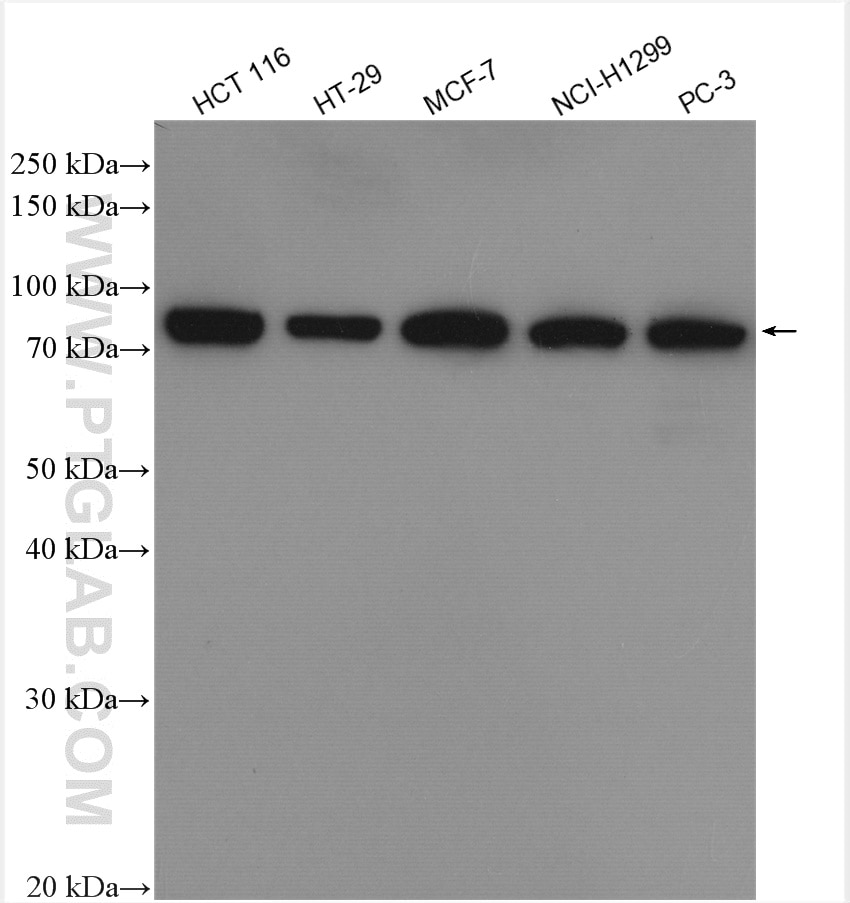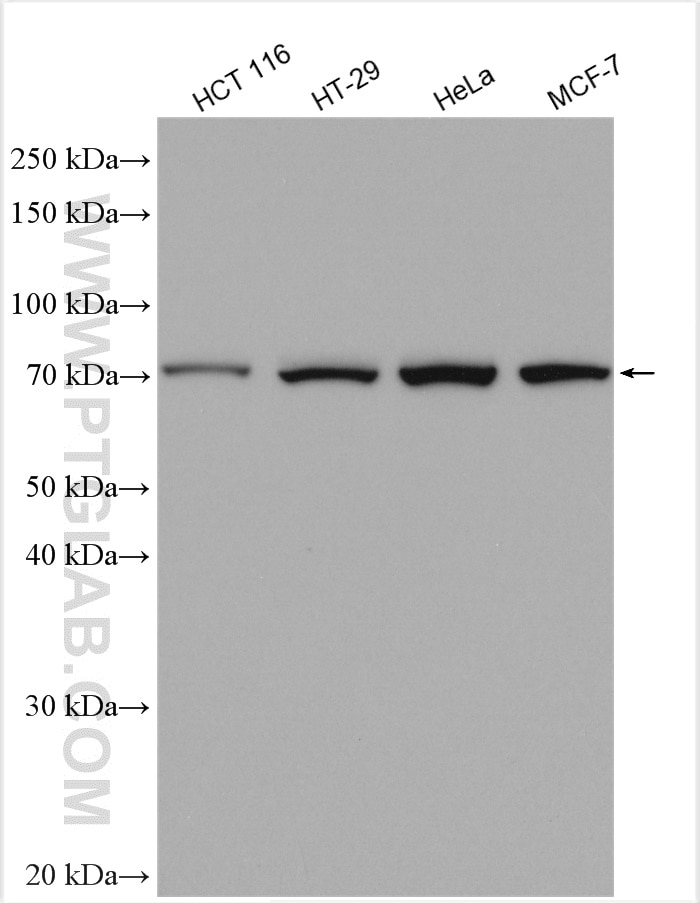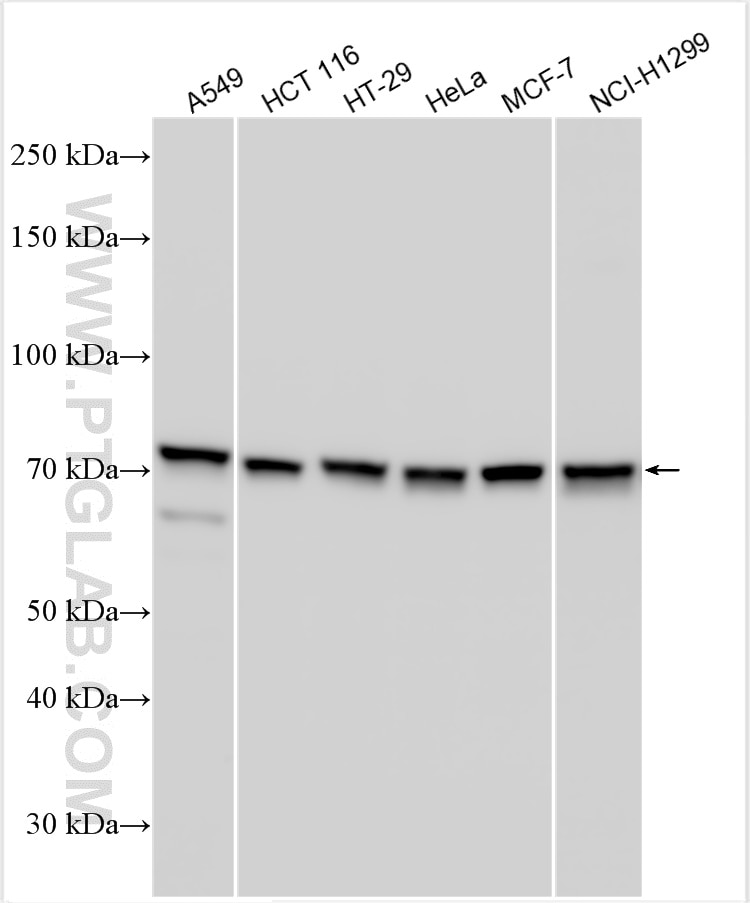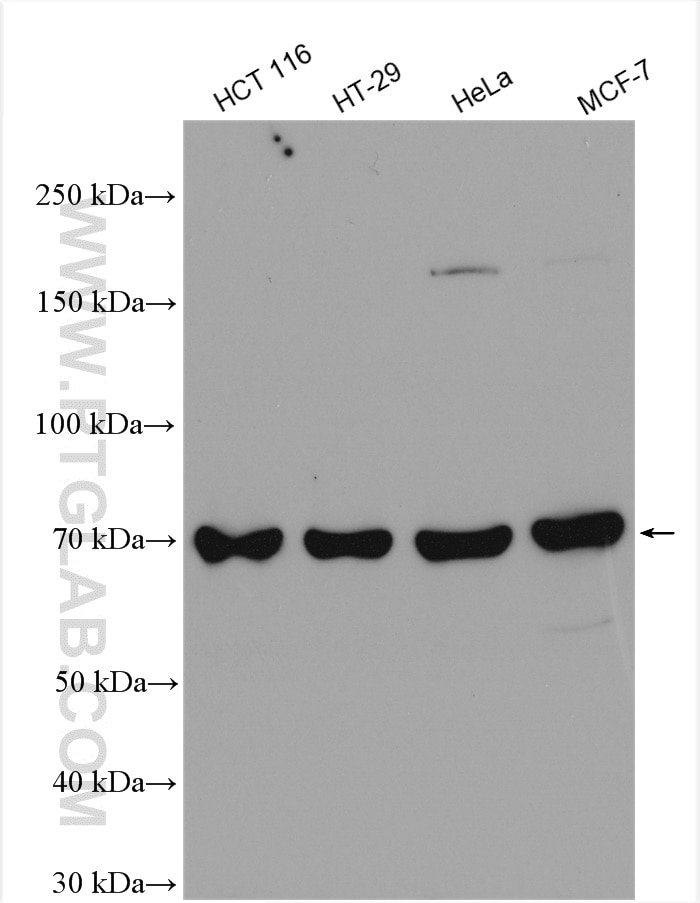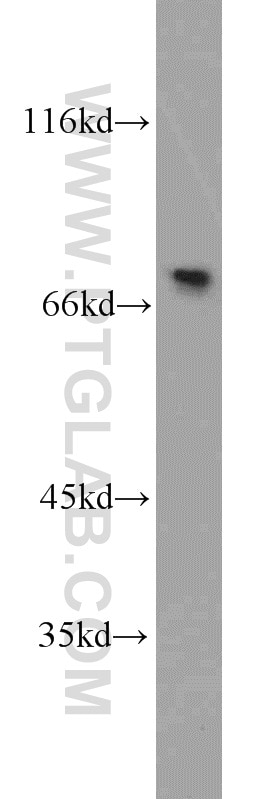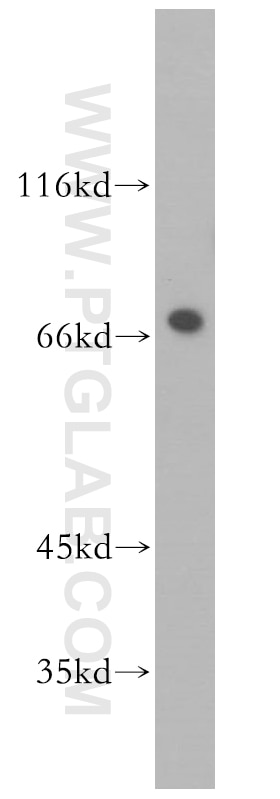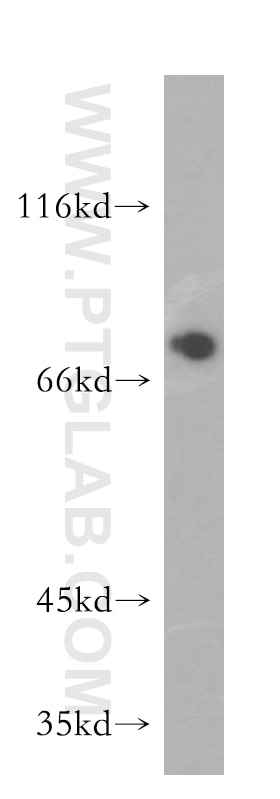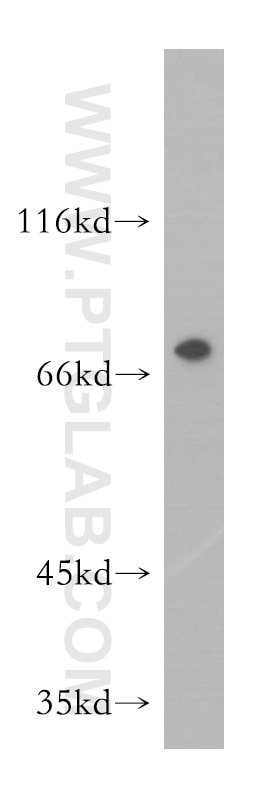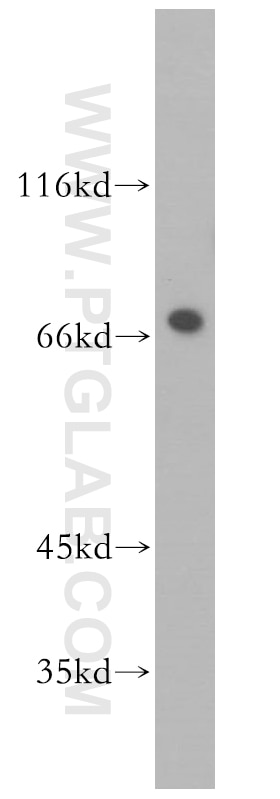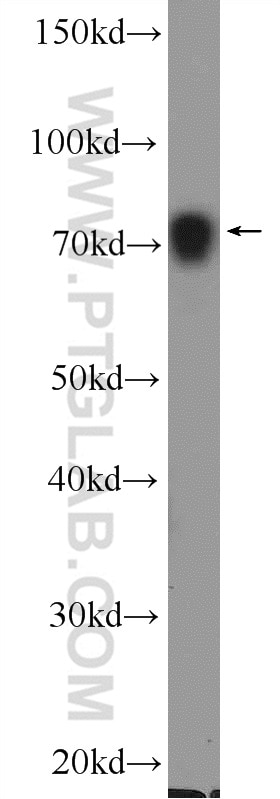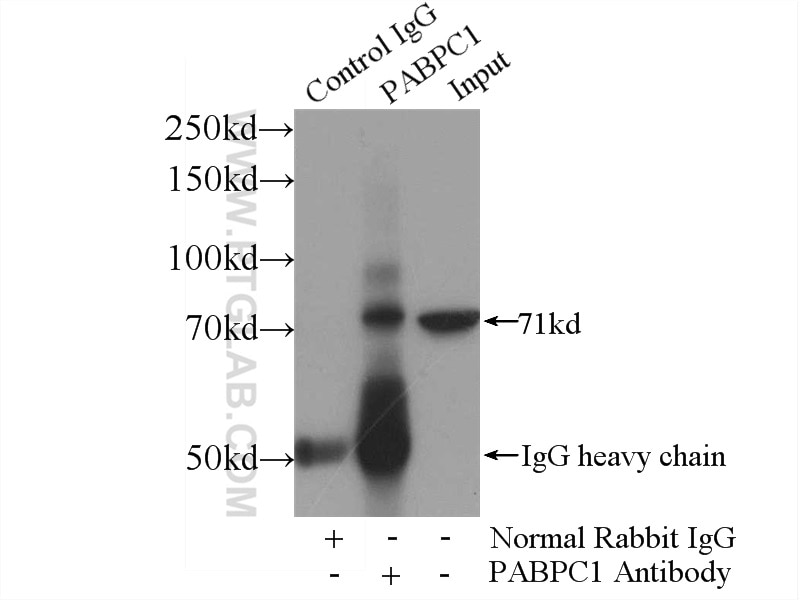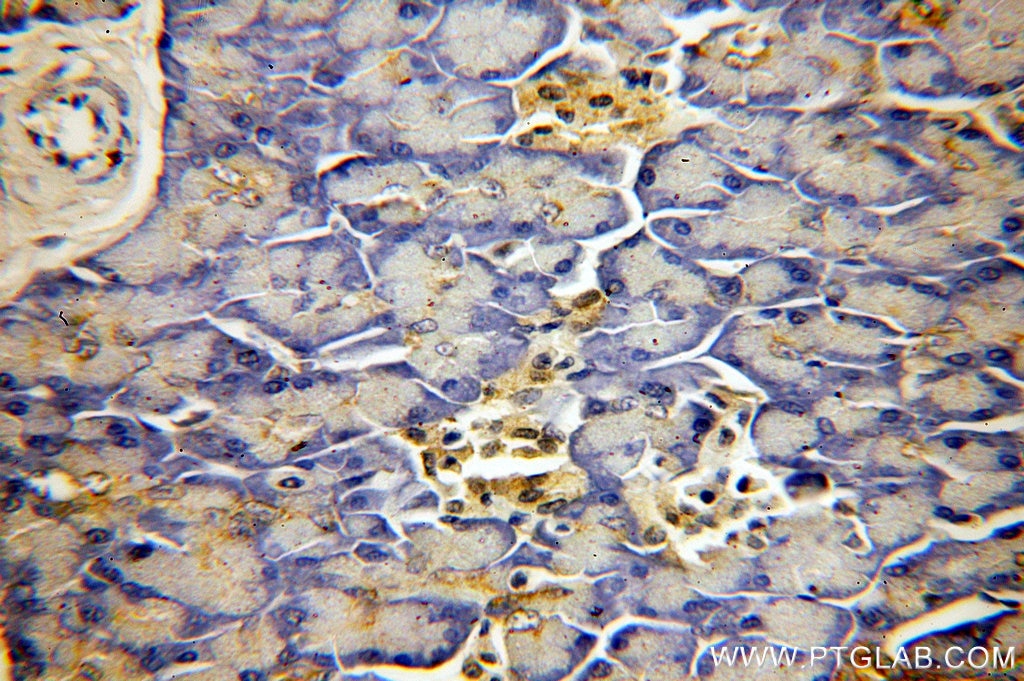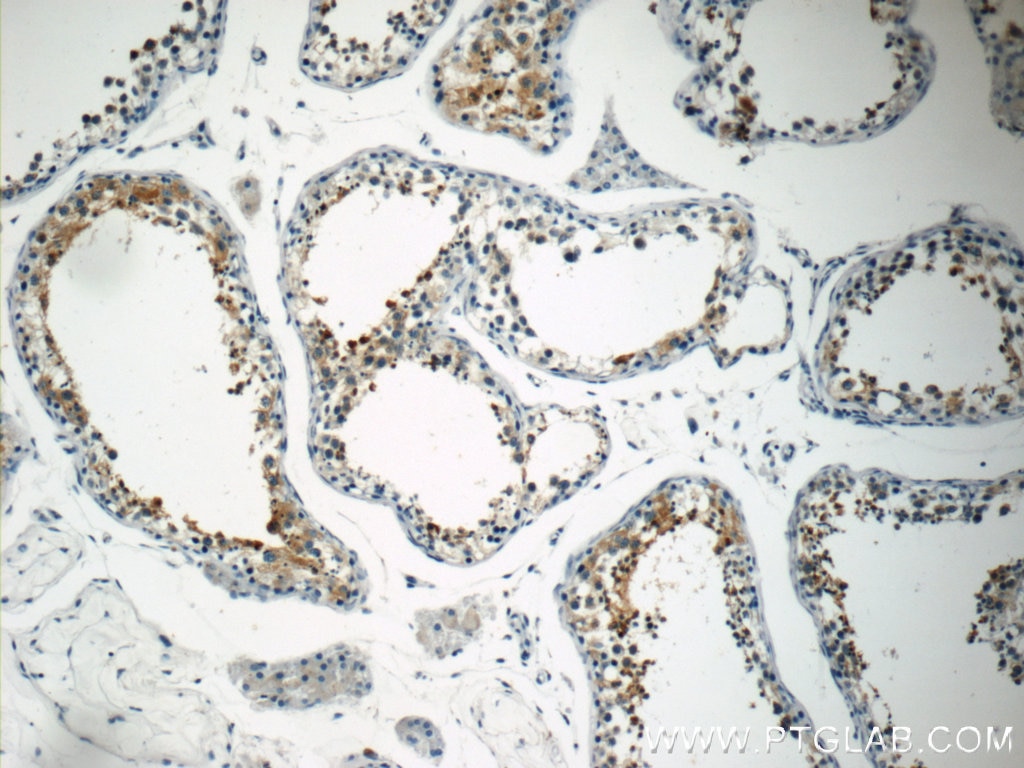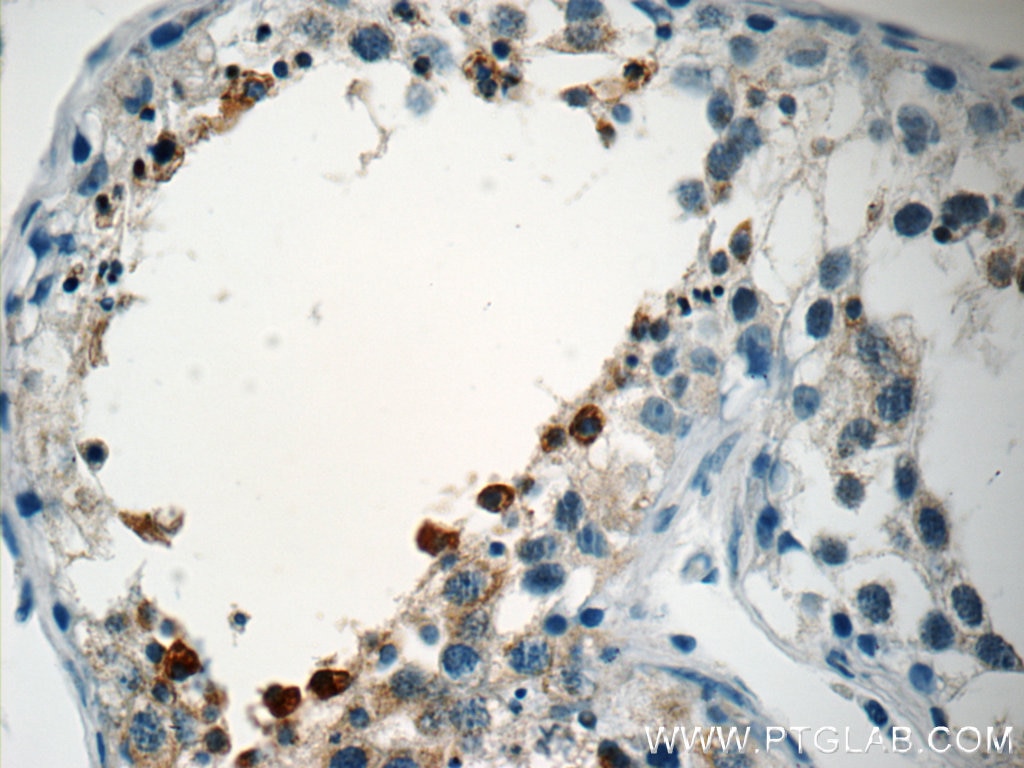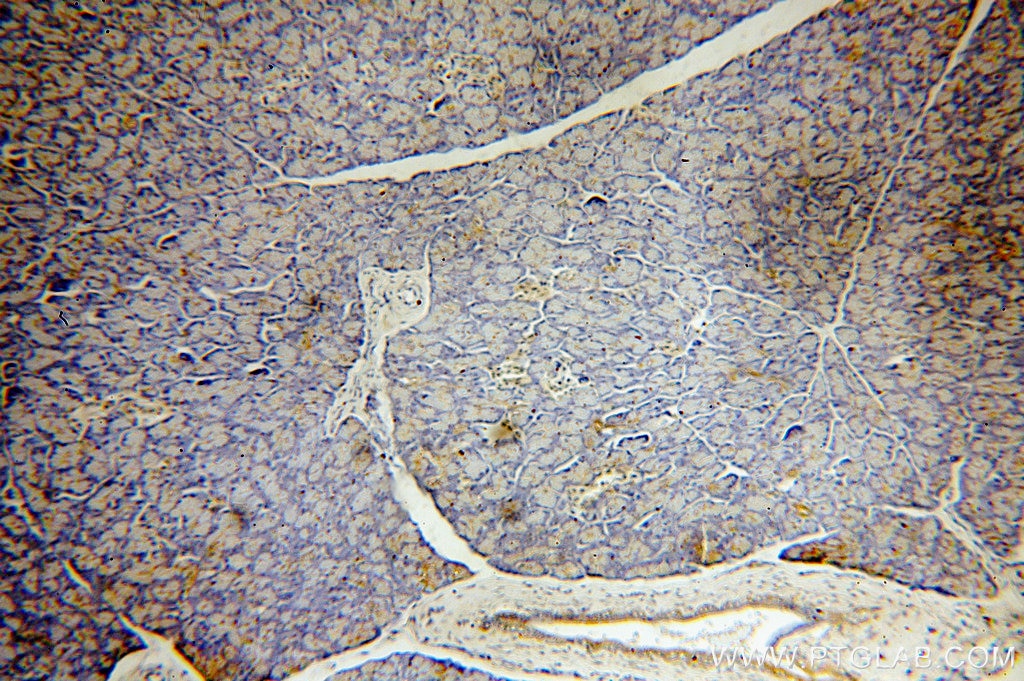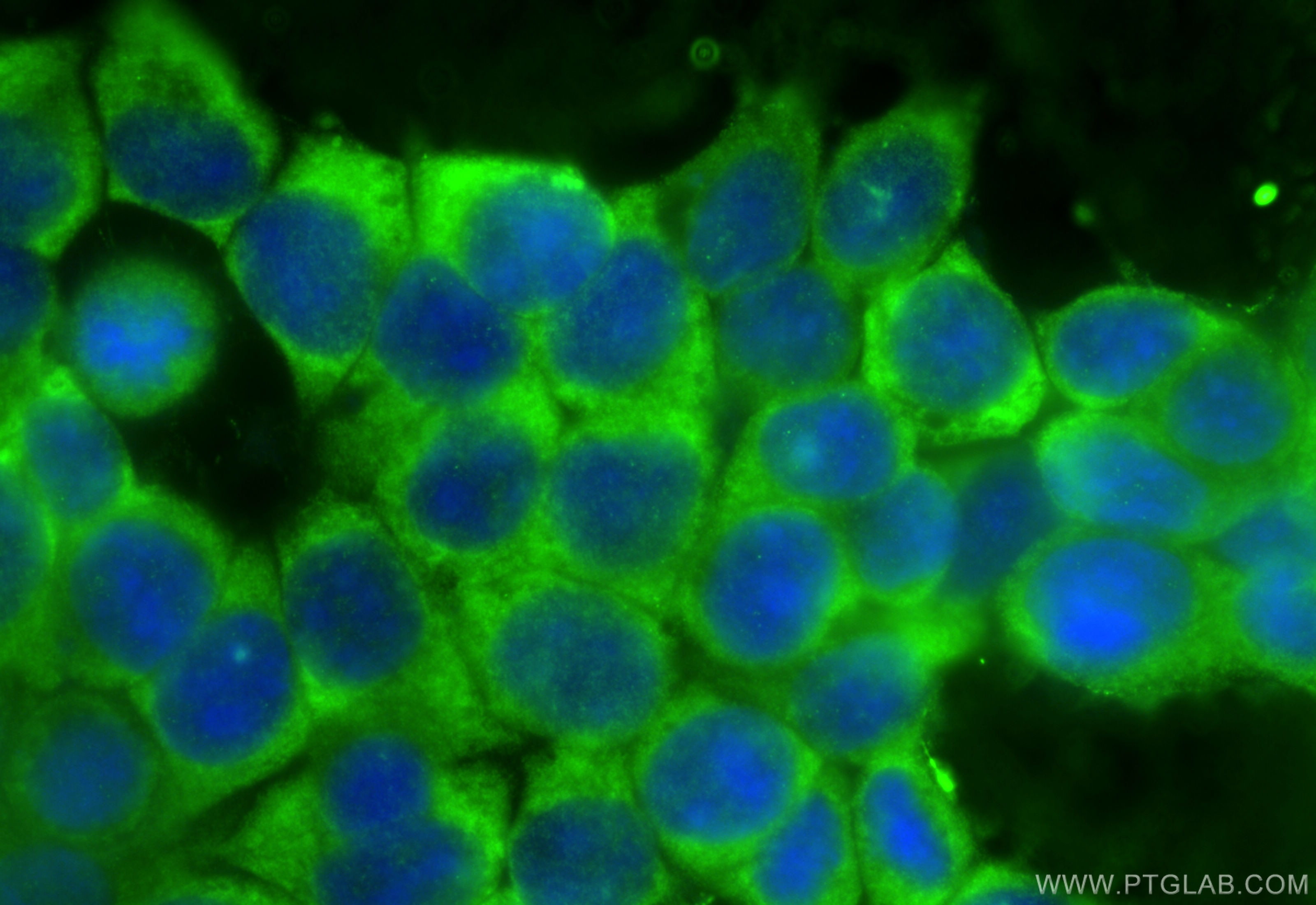Tested Applications
| Positive WB detected in | HCT 116 cells, mouse testis tissue, PC-3 cells, HeLa cells, A549 cells, rat testis tissue, HT-29 cells, MCF-7 cells, NCI-H1299 cells, HCT-116 cells |
| Positive IP detected in | mouse testis tissue |
| Positive IHC detected in | human pancreas tissue, human testis tissue Note: suggested antigen retrieval with TE buffer pH 9.0; (*) Alternatively, antigen retrieval may be performed with citrate buffer pH 6.0 |
| Positive IF/ICC detected in | MCF-7 cells |
Recommended dilution
| Application | Dilution |
|---|---|
| Western Blot (WB) | WB : 1:1000-1:5000 |
| Immunoprecipitation (IP) | IP : 0.5-4.0 ug for 1.0-3.0 mg of total protein lysate |
| Immunohistochemistry (IHC) | IHC : 1:20-1:200 |
| Immunofluorescence (IF)/ICC | IF/ICC : 1:200-1:800 |
| It is recommended that this reagent should be titrated in each testing system to obtain optimal results. | |
| Sample-dependent, Check data in validation data gallery. | |
Published Applications
| KD/KO | See 4 publications below |
| WB | See 33 publications below |
| IHC | See 3 publications below |
| IF | See 11 publications below |
| IP | See 5 publications below |
| CoIP | See 2 publications below |
| RIP | See 3 publications below |
Product Information
10970-1-AP targets PABPC1,PABP in WB, IHC, IF/ICC, IP, CoIP, RIP, ELISA applications and shows reactivity with human, mouse, rat samples.
| Tested Reactivity | human, mouse, rat |
| Cited Reactivity | human, mouse, rat, pig |
| Host / Isotype | Rabbit / IgG |
| Class | Polyclonal |
| Type | Antibody |
| Immunogen |
CatNo: Ag1422 Product name: Recombinant human PABPC1,PABP protein Source: e coli.-derived, PGEX-4T Tag: GST Domain: 287-636 aa of BC015958 Sequence: RITRYQGVNLYVKNLDDGIDDERLRKEFSPFGTITSAKVMMEGGRSKGFGFVCFSSPEEATKAVTEMNGRIVATKPLYVALAQRKEERQAHLTNQYMQRMASVRAVPNPVINPYQPAPPSGYFMAAIPQTQNRAAYYPPSQIAQLRPSPRWTAQGARPHPFQNMPGAIRPAAPRPPFSTMRPASSQVPRVMSTQRVANTSTQTMGPRPAAAAAAATPAVRTVPQYKYAAGVRNPQQHLNAQPQVTMQQPAVHVQGQEPLTASMLASAPPQEQKQMLGERLFPLIQAMHPTLAGKITGMLLEIDNSELLHMLESPESLRSKVDEAVAVLQAHQAKEAAQKAVNSATGVPTV Predict reactive species |
| Full Name | poly(A) binding protein, cytoplasmic 1 |
| Calculated Molecular Weight | 71 kDa |
| Observed Molecular Weight | 71 kDa |
| GenBank Accession Number | BC015958 |
| Gene Symbol | PABPC1 |
| Gene ID (NCBI) | 26986 |
| RRID | AB_10596918 |
| Conjugate | Unconjugated |
| Form | Liquid |
| Purification Method | Antigen affinity purification |
| UNIPROT ID | P11940 |
| Storage Buffer | PBS with 0.02% sodium azide and 50% glycerol, pH 7.3. |
| Storage Conditions | Store at -20°C. Stable for one year after shipment. Aliquoting is unnecessary for -20oC storage. 20ul sizes contain 0.1% BSA. |
Background Information
The poly(A)-binding protein (PABP), which is found complexed to the 3-prime poly(A) tail of eukaryotic mRNA, is required for poly(A) shortening and translation initiation [PMID: 21989405]. Polyadenylate-binding protein 1 (PABPC1) is a cytoplasmic-nuclear shuttling protein important for protein translation initiation, and both RNA processing and stability. In the cytoplasm, PABPC1 binds to the 3' poly(A) tail of eukaryotic mRNAs through its RNA-recognition motifs (RRM) and interacts with the N-terminus of eIF4G, part of the eIF4F complex associated with the 5' cap structure [PMID:20009508, 17381337].
Protocols
| Product Specific Protocols | |
|---|---|
| IF protocol for PABPC1,PABP antibody 10970-1-AP | Download protocol |
| IHC protocol for PABPC1,PABP antibody 10970-1-AP | Download protocol |
| IP protocol for PABPC1,PABP antibody 10970-1-AP | Download protocol |
| WB protocol for PABPC1,PABP antibody 10970-1-AP | Download protocol |
| Standard Protocols | |
|---|---|
| Click here to view our Standard Protocols |
Publications
| Species | Application | Title |
|---|---|---|
Nat Commun Engineering bi-directional chemically-modulated synthetic condensates for cellular control | ||
Brain Behav Immun Transcriptomic and proteomic profiling of bi-partite and tri-partite murine iPSC-derived neurospheroids under steady-state and inflammatory condition | ||
Adv Sci (Weinh) Primate-Specific DAZ Regulates Translation of Cell Proliferation-Related mRNAs and is Essential for Maintenance of Spermatogonia | ||
Exp Mol Med The deubiquitinating enzyme STAMBP is a newly discovered driver of triple-negative breast cancer progression that maintains RAI14 protein stability | ||
Nat Commun An oncopeptide regulates m6A recognition by the m6A reader IGF2BP1 and tumorigenesis. | ||
Dev Cell DDX20 is required for cell-cycle reentry of prospermatogonia and establishment of spermatogonial stem cell pool during testicular development in mice |
Reviews
The reviews below have been submitted by verified Proteintech customers who received an incentive for providing their feedback.
FH Elisa (Verified Customer) (01-13-2023) | PABPC1 (Poly(A) Binding Protein Cytoplasmic 1) staining (in magenta) and Hoechst (nuclear staining) in blue. PABPC1 ab shows a clear citoplasma staining. Method: RPE1 cells were fixed in cold methanol for 10' at -20C. Cells were then rehydrated with PBS for 5'. Membrane permeabilization was then performed with 0.1% Triton + 0.1% Tween +0.01%SDS in PBS for 10'. Cells were finally incubated with blocking buffer (5% BSA+ 0.1% Tween in PBS) for 30' at RT. Primary antibody was diluted in blocking buffer 1:200 and incubated for 1h at room temperature. Alexa-488-Anti-rabbit was used as secondary antibody (1:600 dilution) (1h at room temperature).
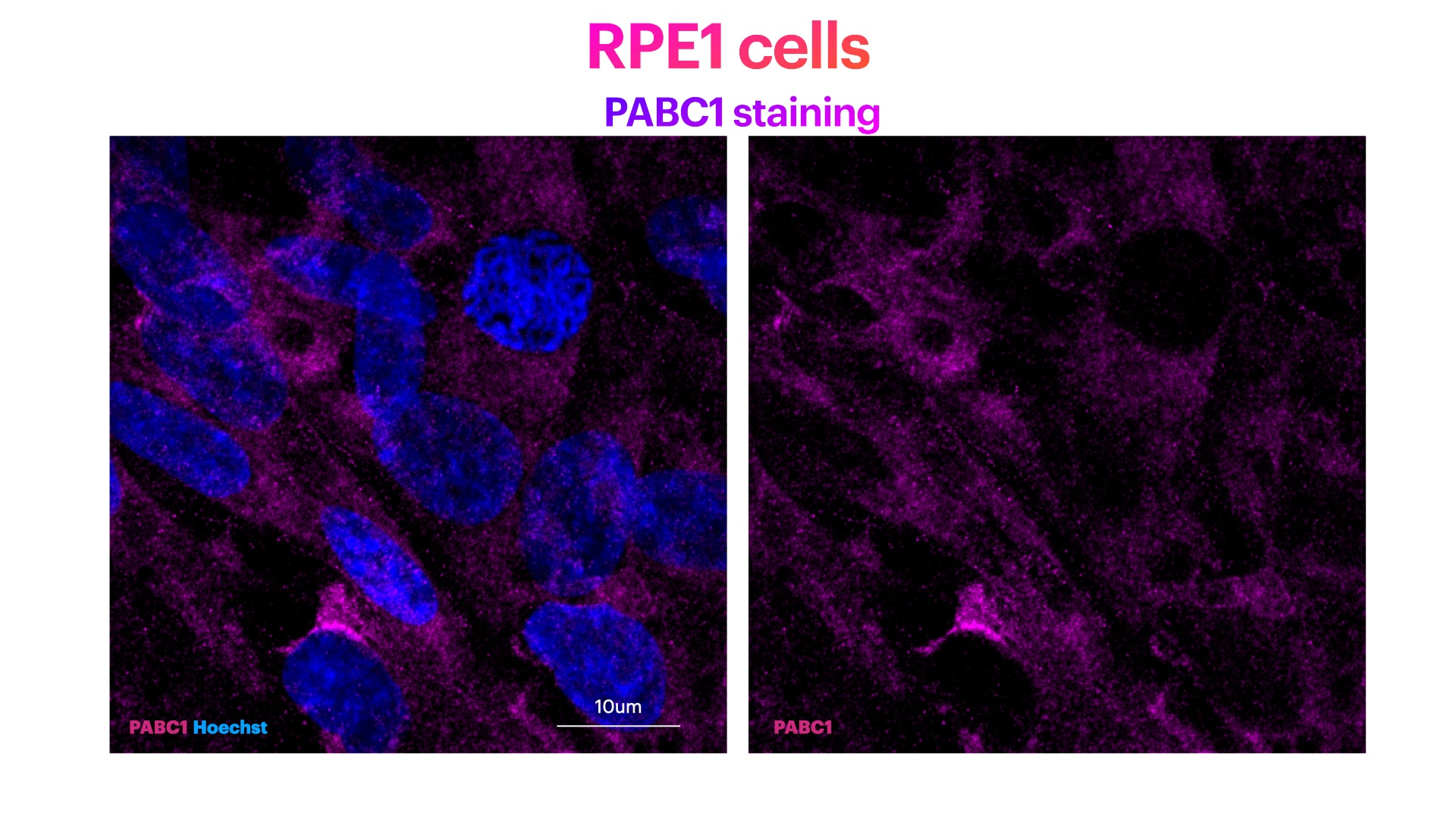 |
FH Zee (Verified Customer) (01-28-2020) | It worked very well when I performed western blot.
|
FH George (Verified Customer) (09-11-2019) | Rb PABP Ig shows very little endogenous background staining with clear dispersed staining seen both in the nucleus and cytoplasm. 90mins heat shock at 42oC led to granular formation in the cytoplasm
|

